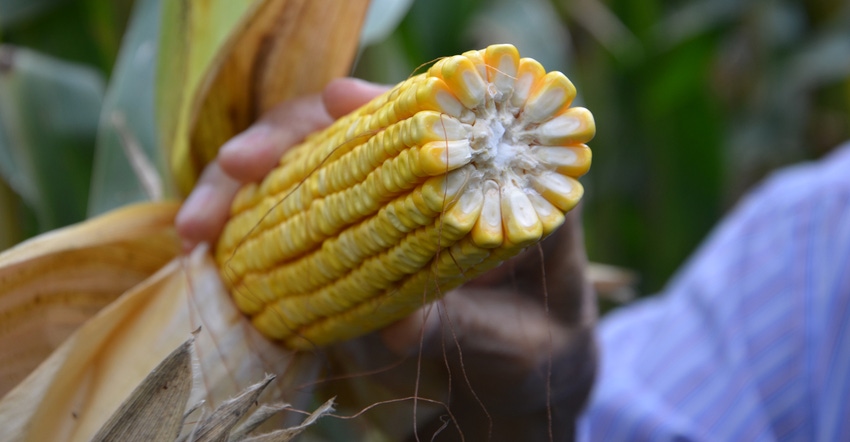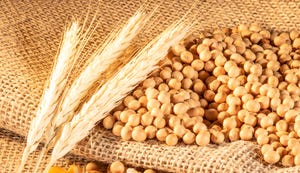
A year ago, many farmers were pleasantly surprised at harvest. Yields were often better than expected. Many people attributed the strong yields to ideal weather for grain fill, including cool nights. Corn seems to do best with lower nighttime temperatures during the grain fill period.
“When it’s warmer at night than corn likes, plants use energy for respiration, which means there is less photosynthates left for kernels,” says Dave Nanda, a former plant breeder who is now an independent crops consultant based in Indianapolis. “Cooler nights, such as those in late summer in 2017, are ideal for grain fill.”
A scenario with cooler nights typically results in plumper kernels. When doing yield estimates for such a scenario, use a smaller “fudge factor,” because it takes fewer kernels to fill a bushel basket. The result is higher yield.
Yield examples
Here’s an example using a yield check in late August of this year in a representative corn field. Calculations use the standard yield formula explained in the Purdue University Corn and Soybean Field Guide.
The formula is: Ears per acre times kernels per ear divided by the fudge factor. Kernels per ear is determined by average number of rows of kernels per ear times average number of kernels per row.
In this example, a site was selected at random, and ears were counted on two rows in 1/1,000 acre and then averaged together. Three ears in each row were selected at random, and averaged for number of kernels and kernels per row. The variable is the fudge factor. If you believe kernels will be average or light, use the higher number. If you believe kernels will fill to potential, use a lower number.
In this example, there were 29,000 ears per acre, with an average of 16 rows and 35 kernels per row. That’s 560 kernels per ear.
• Example 1 (fudge factor 90). You’re assuming kernels don’t fill well and ears are light. The math: 29 x 560 = 16,240 / 90 = 180.4 bushels per acre of dry corn
• Example 2 (fudge factor 85). Kernel fill is OK. Maybe it’s a hybrid that only has average kernel depth. Use the information from the same location with a different fudge factor. The math: 29 x 560 = 16,240 / 85 = 191 bushels per acre
• Example 3 (fudge factor 80). This is a hybrid with deep kernels, and you believe grain fill is adequate. The math: 29 x 560 = 16,240 / 80 = 203 bushels per acre
• Example 4 (fudge factor 75). Your area experienced a late summer like 2017, with cool nights. The hybrid has deep kernels, and you’re expecting very good grain fill. The math: 29 x 560 = 16,240 / 75 = 216.5 bushels per acre
Note the swing depending upon which fudge factor you use, from 180.4 to 216.5 bushels per acre. That’s a difference of just over 36 bushels per acre.
Even if you zero in on the middle two factors, 80 and 85, you still have more than a 10-bushel swing — just based on how well kernels fill.
What’s the bottom line? Grain fill matters, Nanda concludes.
About the Author(s)
You May Also Like




